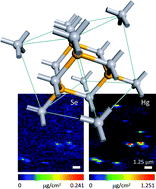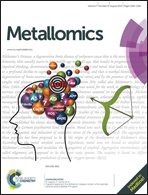Interaction of mercury and selenium in the larval stage zebrafish vertebrate model
Abstract
The compounds of mercury can be more toxic than those of any other non-radioactive heavy element. Despite this, environmental mercury pollution and human exposure to mercury are widespread, and are increasing. While the unusual ability of selenium to cancel the toxicity of mercury compounds has been known for nearly five decades, only recently have some aspects of the molecular mechanisms begun to be understood. We report herein a study of the interaction of mercury and selenium in the larval stage zebrafish, a model vertebrate system, using X-ray fluorescence imaging. Exposure of larval zebrafish to inorganic mercury shows nano-scale structures containing co-localized mercury and selenium. No such co-localization is seen with methylmercury exposure under similar conditions. Micro X-ray absorption spectra support the hypothesis that the co-localized deposits are most likely comprised of highly insoluble mixed chalcogenide HgSxSe(1−x) where x is 0.4–0.9, probably with the cubic zincblende structure.


 Please wait while we load your content...
Please wait while we load your content...